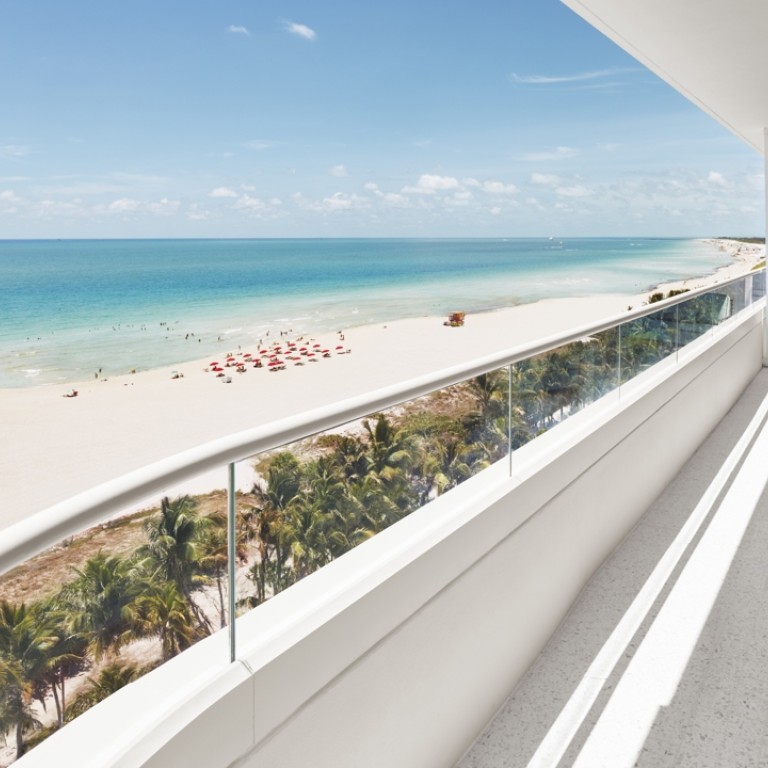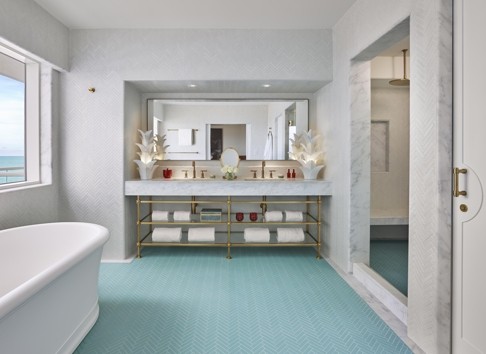
Faena Hotel breathes new life into neglected Miami beach neighbourhood
Two innovators have kick-started the transformation of a rundown and uninviting stretch of beach into a tourist draw with a cultural and arts quarter, high-end homes and top shops and restaurants
“When I came here this was not a good area. People passed but nobody stopped, there was nothing, not even a cafe.”
READ MORE: Redbury South Beach a celebrity-studded taste of mid-century Miami
Fast forward to 2016 and the glamorous Faena Hotel is one of the first openings in the nascent Faena district (the neighbourhood is only the second given official district designation since the Art Deco Historic District was thus named in 1979). Beautifully fashioned out of the former 1940s Saxony Hotel, which was a luxury playground for stars such as Frank Sinatra, Marilyn Monroe and Dean Martin, the hotel is a multi-sensorial and dramatic experience. It’s no surprise then that its look and design comes courtesy of a collaborative effort between Faena, film director Baz Luhrmann and the latter’s wonderfully talented set designer wife Catherine Martin.

The spaces are cinematic and layered, revealing themselves a little more every time you look. The trio have created interiors punctuated by intense reds, turquoises and golds and the work of artists and designers, known and unknown, many from Latin America. Multi-talented Argentine graphic designer Juan Gatti was asked to create a lush and extravagant artistic universe for the hotel that includes site-specific murals celebrating exotic flora and fauna in its contemplative double-height entrance and opulent, nature-themed designs that feature in everything from the scarves the female staff wear around their necks to the paper that lines the hotel’s stationery envelopes.

“Nobody takes risks today any more, in any industry,” says Faena. And he should know about risks, having sold off his fashion business in 1996 and retired to Punta del Este in Uruguay for five years to become a rose gardener. “When people create a US$300 million (HK$2.3 billion) hotel they usually go safe and choose to make it all white. Many hotel chains look like banks.” Faena isn’t about to go safe any time soon because he isn’t interested in places that are cold, lacking in intensity or low on “love and emotion”. “What we brought to the table is the opposite of what a hotel is today,” he concludes.

But Faena’s vision doesn’t end with these luxe lodgings. Just steps away from the hotel are several other buildings, some existing and listed (with interesting art deco facades) and others new builds, in various states of completion. Some are destined for residential use (such as the Foster-designed and already completed 18-storey Faena House, with its curvaceous oversized gleaming white balconies and black concrete base and triple-height polished black lobby), others for retail, dining and parking (also of boats in the form of a marina). Aside from the residential component, which is being sold, Faena is at pains to explain that the rest will be managed and operated by the group and that they are invested in the future cultural success of the district.
The most striking of the new buildings is undoubtedly the circular Faena Forum by renowned Dutch architectural outfit OMA (best known in Asia for designing CCTV’s headquarters building in Beijing). Its swirling 50,000 sq ft form will contain exhibition halls, two events spaces and a dome with a walkway around it that allows views in and out. Its slanted glazed openings offer framed views of the super-sized sandy beaches on one side and the lush green Indian Creek river on the other. What makes Faena Forum even more interesting is that it is part of Faena Art, a not-for-profit venture with programming overseen by curator and cultural powerhouse Ximena Caminos (Faena’s wife) that promises to be both multi-disciplinary and cross-cultural, encouraging dialogue between North and South. A dialogue that has been so far sorely missing from the US art scene, says Faena.
“This is the first time that a project arrives from the south to the north,” he says. “That’s crazy when you think it’s 2016 and that we are from the same land, the same trees, the same sky. In North America they have been always watching East, looking towards Asia, they never looked below! There was never a voice shouting from the South.” Until now that is.
By using art, architecture and design – a “collaboration between the best minds in the world” if you will – Blavatnik and Faena have hit on a winning formula, creating something unique that will attract both buyers and visitors and enable Faena Art to put on the sort of accessible (and often free) arts and events programming other venues can only dream of.
Faena grandiloquently talks about creating a utopian place, a sort of urban alchemy. With an investment of more than a billion US dollars and the sort of art direction more commonly accorded to large Hollywood blockbusters (for the cultural venue’s opening this autumn Faena has hired composer Michael Nyman to write a symphony) it is arguably not so much alchemy as enlightened, savvy and well-resourced marketing and content. But over and above that the Faena district appears also to be about the transformative power of art and romance. It’s an unlikely, heady and captivating mix. As Faena says, “What we are trying to do here is elevate people.”


